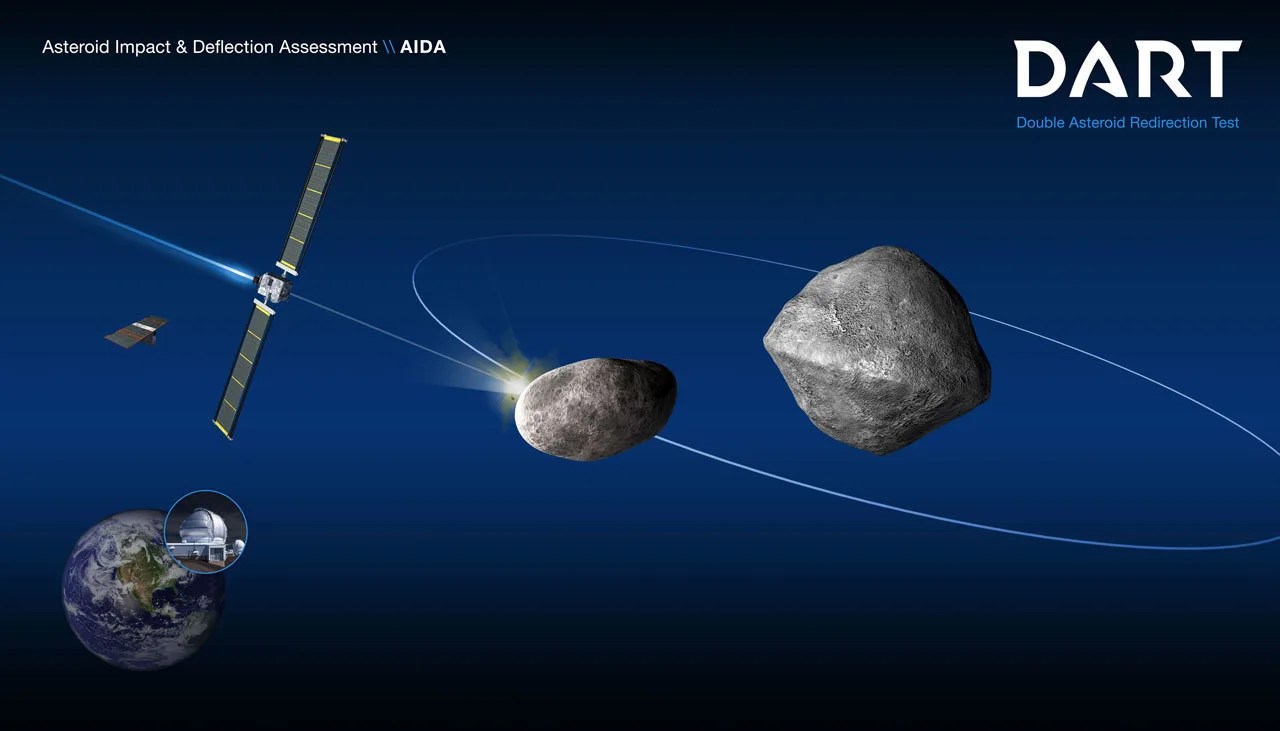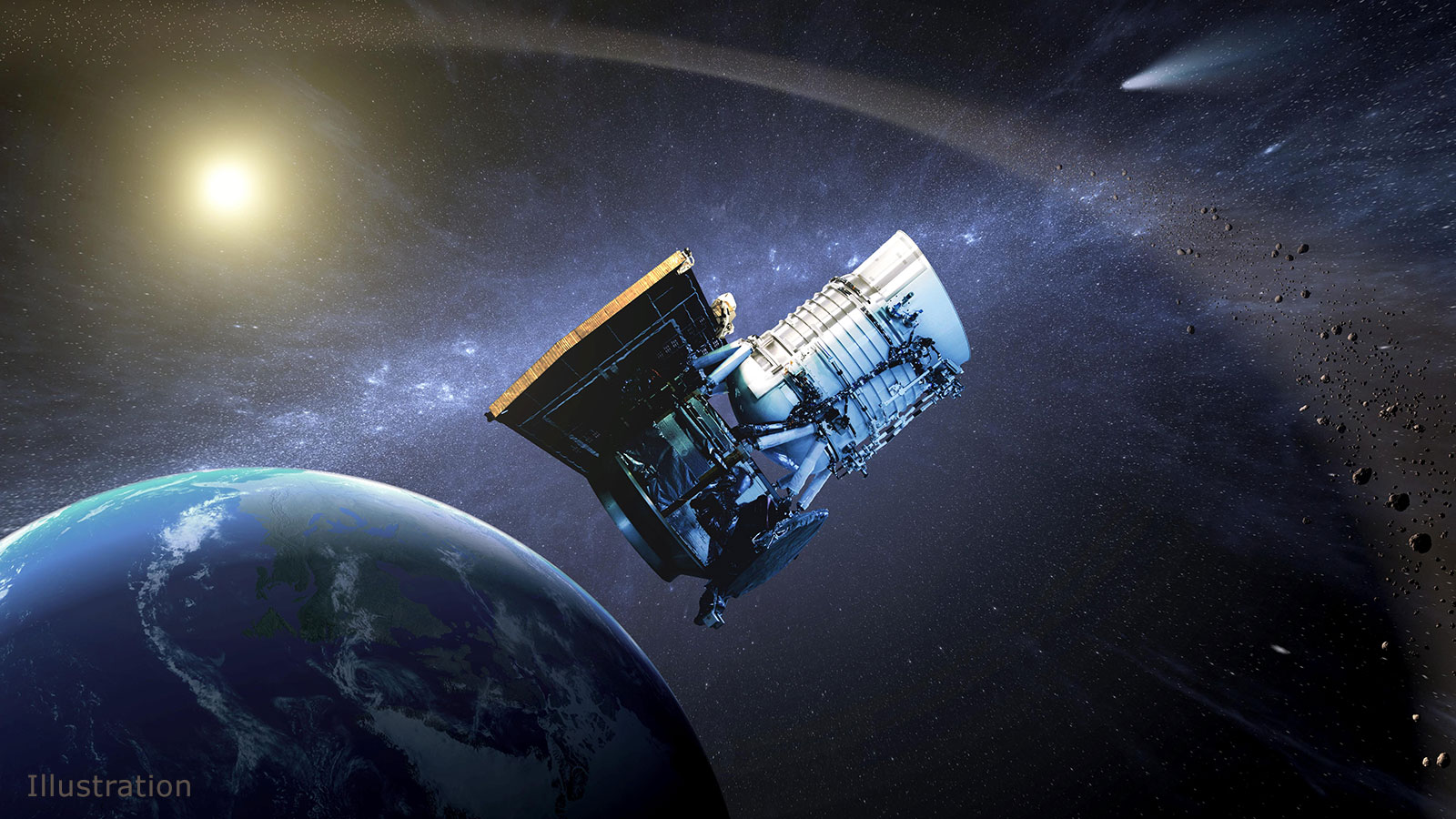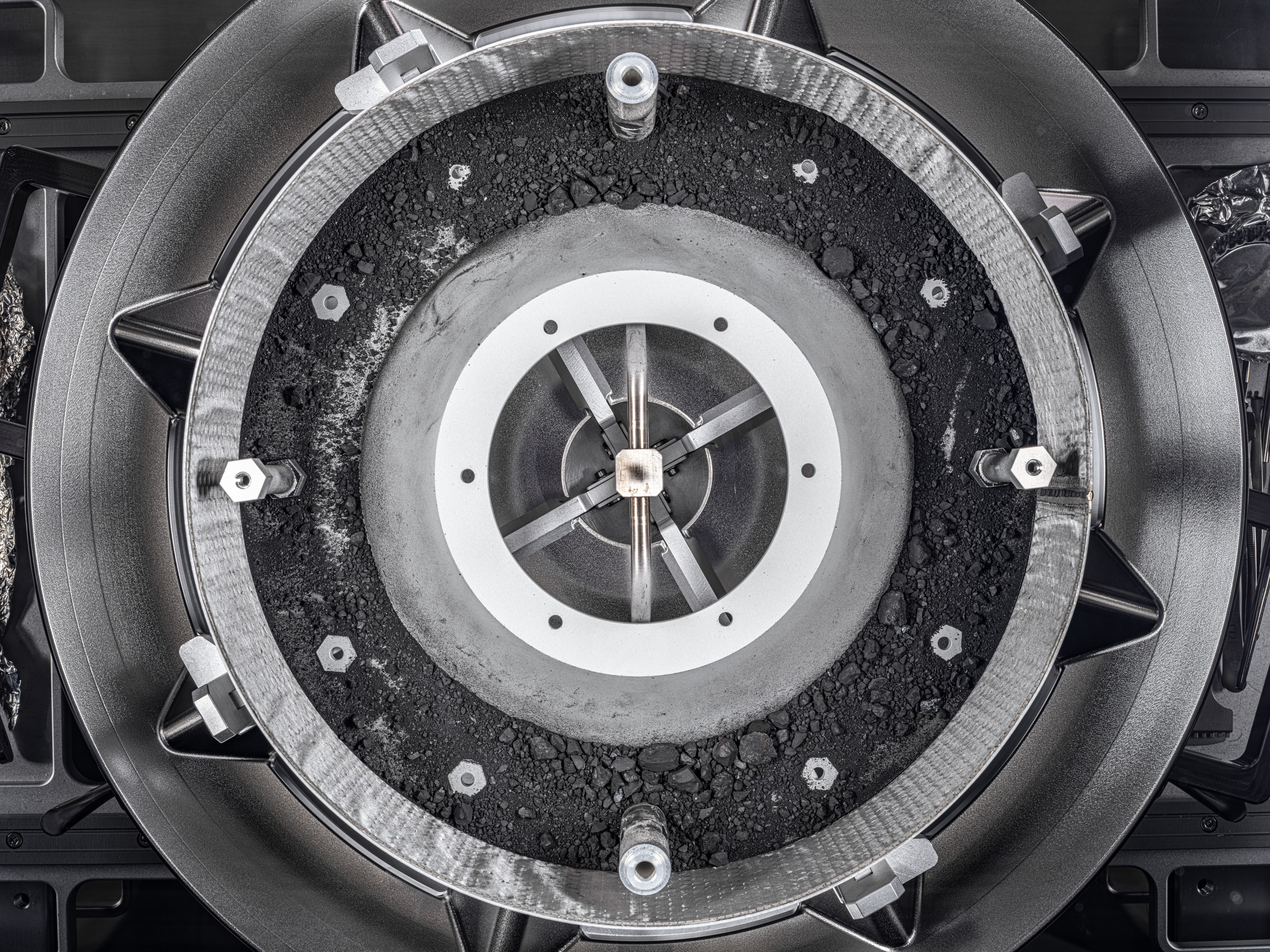6 min read

The Double Asteroid Redirection Test (DART) – NASA’s first mission to demonstrate a planetary defense technique – will get one chance to hit its target, the small moonlet in the binary asteroid system Didymos. The asteroid poses no threat to Earth and is an ideal test target: measuring the change in how the smaller asteroid orbits about the larger asteroid in a binary system is much easier than observing the change in a single asteroid's orbit around the Sun. Work is ramping up at the Johns Hopkins Applied Physics Laboratory in Laurel, Maryland, and other locations across the country, as the mission heads toward its summer 2021 launch – and attempts to pull off a feat so far seen only in science fiction films.
Observing Didymos
To navigate the DART spacecraft to its intended target – a binary asteroid that consists of a small moon (Didymos B) orbiting a larger body (Didymos A) – scientists need to understand how the system behaves. Scientists have been making efforts to observe Didymos from Earth since 2015, and now, an international campaign coordinated by Northern Arizona University’s Cristina Thomas, DART’s Observing Working Group Lead, is making critical observations using powerful telescopes worldwide to understand the state of the asteroid system before DART reaches it. Current observations will help researchers to better understand the extent of the impact made when DART slams into its target – Didymos B – in September 2022.
The most recent observation campaign took place on Cerro Paranal in northern Chile, where scientists viewed Didymos using the Very Large Telescope, which is run by the European Southern Observatory. The “VLT” comprises four telescopes, each with 8.2-meter mirrors; two of them were used in the recent observations.
“The Didymos system is too small and too far to be seen as anything more than a point of light, but we can get the data we need by measuring the brightness of that point of light, which changes as Didymos A rotates and Didymos B orbits,” said APL’s Andy Rivkin, DART investigation team co-lead, who participated in the observations. The brightness changes indicate when the smaller moon, Didymos B, passes in front of or is hidden behind Didymos A from our point of view. These observations will help scientists determine the location of Didymos B about Didymos A and inform the exact timing of DART’s impact to maximize the deflection.
The investigation team will observe Didymos again from late 2020 into the spring of 2021. Final ground-based observations will occur as the spacecraft travels toward the asteroid, as well as after impact occurs.
Research with Impact
The telescope observations are key to understanding Didymos, but they’re not quite enough to fully understand Didymos B, DART’s target.
“Even though we are performing ground-based observations, we don’t know much about Didymos B in terms of composition and structure,” said Angela Stickle, DART’s Impact Simulation Working Group Lead from APL. “We need to anticipate a wide range of possibilities and predict their outcomes, so that after DART slams into Didymos B we’ll know what our measurements are telling us.”
Structure is essential to the equation; in Didymos, researchers aren’t sure whether DART will impact an asteroid composed of solid rock, loose rubble or something “softer,” more akin to sand. A softer surface would absorb more of DART’s force and may not be pushed as drastically as if DART hit a harder surface.
Extensive modeling and simulation, part of a large international campaign that started in 2014, is being done in conjunction with Lawrence Livermore National Laboratory and other members of the investigation team to help researchers predict what will happen to DART’s target after impact. They’ve considered these various factors—along with the added momentum from DART’s impact and the resulting debris ejected from the crater it creates – as they’ve run various simulations. These simulations help the team shape its expectations for impact.
Eyes on DART and Didymos
Researchers will have the ability to eventually see the Didymos asteroid system close-up – albeit briefly – thanks to DART’s onboard DRACO imager and a planned ride-along CubeSat, the Italian Space Agency’s LICIACube.
Released just before impact, the shoebox-sized LICIACube would document DART’s impact and its aftermath. The CubeSat recently passed its preliminary design review and has moved into the next phase of development.
DRACO – the Didymos Reconnaissance and Asteroid Camera for Op-nav – is DART’s only onboard instrument. It will serve primarily as DART’s optical navigation system, capturing images that help the spacecraft reach its target.
DRACO will feed its images into the APL-developed Small-body Maneuvering Autonomous Real-Time Navigation (SMART Nav) algorithm – the system that, in the spacecraft’s final hours, will precisely and automatically guide DART into Didymos B. SMART Nav is preparing to undergo a series of tests on simulated spacecraft avionics, which will boost engineers’ confidence that the system will be ready to operate successfully when the mission will be relying on it.
Wired for Success
While much of the work on DART so far has been modeling and simulation, many parts of the spacecraft have started to take shape. A full-scale mock-up of DART now serves as a placeholder for the assembly of cables and connectors that will eventually make up the wiring harness. The mission has signed off on the manufacturing of several flight hardware components, specifically the spacecraft’s solar arrays—which passed the critical design review stage—as well as the radio and power system electronics.
In a recent design change, DART will now be able to complete its mission by relying on small hydrazine thrusters in addition to having the ability to utilize the electric propulsion system, NASA’s Evolutionary Xenon Thruster Commercial (NEXT-C) ion engine, which will also push the start of the primary launch window to July of 2021, shortening the mission flight time. “For a mission that relies on one chance, it’s a move that will provide DART with more options to ensure it hits its mark,” said Ed Reynolds, DART project manager at APL.
NASA recently selected the SpaceX Falcon 9 to send DART on its mission. Read more about it here.







